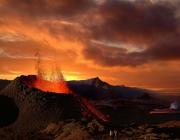
Editor’s Note
Information in this article is based on material shared during the 2016 Annual Meeting session of the same name.
The 2015 world tour of catastrophic losses is a sobering one.
Final figures showed $92 billion in man-made economic losses and $37 billion in global insured losses. The catastrophic losses were 0.12 percent of the global gross domestic product.1 The year’s three major catastrophic losses were the unprecedented heat wave in India; destructive flash floods in Chennai, India; and a deadly earthquake in Kathmandu, Nepal.
Acts of Nature
In April of 2015, India felt high temperatures that went from 102 degrees Fahrenheit to 112 degrees Fahrenheit. The extreme temperatures, combined with high humidity and resultant atmospheric conditions, led to physiological stress and death among members of that population. Daily maximum temperature exceeded the average maximum temperature by about 43 to 46 degrees Fahrenheit, resulting in 2,422 deaths.
In response, the National Disaster Management Authority and the government of India put together a disaster management plan that covers preparedness, early warning signs, and communication around heat-related illnesses, as well as roles and responsibilities for managing heat waves.2
Meanwhile, when heavy rainfall generated by an annual northeast monsoon hit the coast of southern India, the area hardest hit was Chennai, the capital of the state of Tamil Nadu. More than 500 people were killed, and over 1.8 million people were displaced. With estimates of damages and losses ranging from nearly $3 billion to over $15 billion, the floods proved the costliest of 2015.
The third most catastrophic loss event of 2015 occurred in April, when Kathmandu, Nepal, experienced an earthquake that registered 7.8 to 8.1 on the moment magnitude (Mw) scale, killing more than 8,000 people and injuring more than 21,000. The series of earth movement was felt on Mount Everest as an avalanche and up to 700 miles away, in Langtang Valley and Delhi, India, causing loss of life and infrastructure.
|
To read the entire article and receive CE for CPCUs credits, visit The Institutes CPCU Society Knowledge Center. |